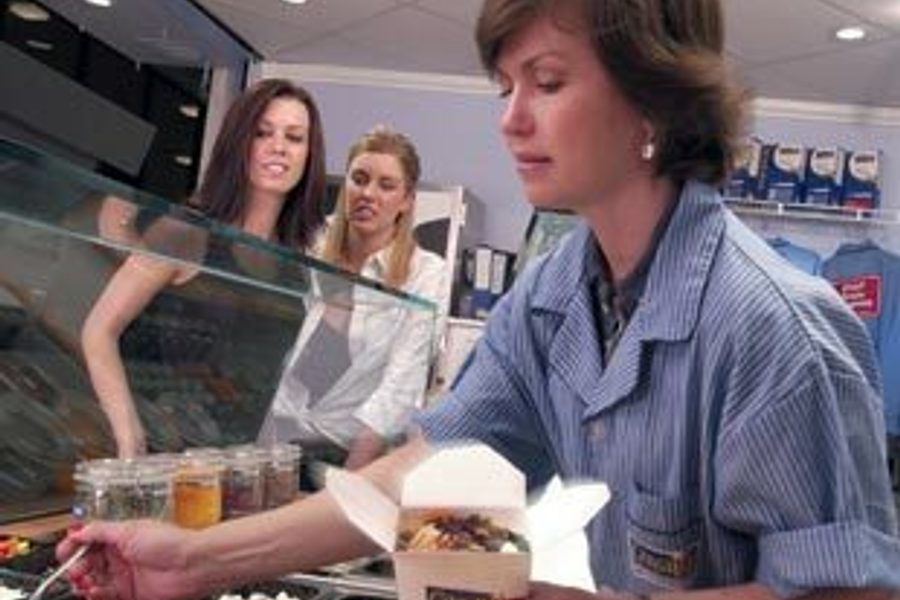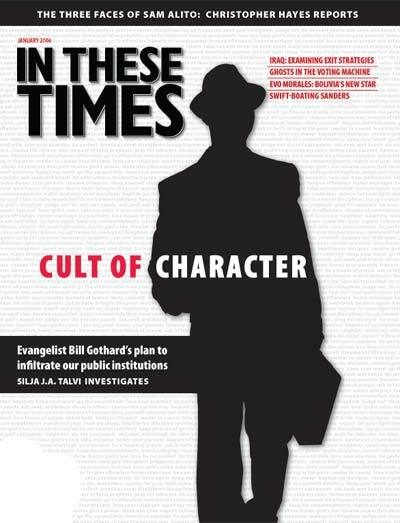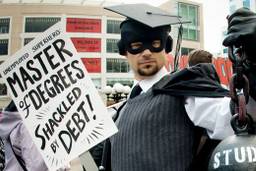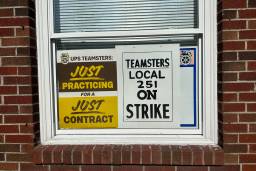Snap, Crackle Patents
Can you patent the business method of selling cereal? One company gave it a shot.
Christopher Hayes

Back in 2000, David Roth had one of those “eureka” moments that are the stuff of American entreprenurial legend. After spotting a box of Cocoa Puffs hidden behind the desk of a Wall Street executive, Roth dreamed up a retail business that would sell cereal all the time. He and a partner opened the first Cereality in Tempe, Arizona, on the campus of Arizona State University. College students flocked; Roth followed up with stores in Philadelphia and Chicago; and news outlets from Time to CNN fawned.
But as is so often the case with good ideas, Roth wasn’t the only one to have it. Across the country, Rocco Monteleone was getting set to open Bowls, a cereal cafe in Gainesville, Florida, (near the University of Florida) when he found out that Cereality had beaten him to the punch. OK, he figured, no harm, no foul: It’s America. Anyone can open a restaurant selling cereal. Right?
Well, kind of. In May, Monteleone received a letter from Cereality’s attorney warning him that he may be in violation of a patent application the company had filed for its “methods and system” of selling cereal. These included: “displaying and mixing competitively branded food products” and adding “a third portion of liquid.”
Cuckoo for patent law
Just 10 years ago, this kind of a patent would have been impossible even to consider. But a landmark shift in the law has made it possible to patent entire ways of doing business – a change that has prompted a rush on patent claims, opened a Pandora’s Box of litigation and threatens to put large swaths of American innovation under the control of big business. Given the transition from an industrial to digital economy, changes in patent law were inevitable and necessary. But critics argue that when it comes to business methods the traditional rationales for granting patents – they incentivize expensive research and encourage inventors to share their knowledge – don’t apply.
“You need incentives for people to innovate in technology,” says Jason Schultz, an attorney with the Electronic Frontier Foundation’s Patent Busting project. “You’ve never needed that in businesses because if a business is successful you make money. It’s its own incentive.”
When the first U.S. patent board convened in 1790, with Thomas Jefferson serving as one of the members, it required inventors to submit a miniature model of their invention. The board expected to issue patents for machines and industrial processes, things like cotton gins or the proverbial “better mouse trap” that were the engine of American economic growth. And for the first 200 years of the country’s history, that’s pretty much what they did.
But over the last three decades the category of patentable subject matter has expanded significantly beyond the widgets of the industrial age: In 1980, the Supreme Court decided that life-forms such as bacteria were patentable; soon thereafter the United States Patent and Trade Office (USPTO) began issuing patents for isolated genes, and in 1998, in the landmark case State Street Bank v. Signature Financial Group, Inc., the Third Circuit Court of Appeals ruled business methods patentable as well.
Signature had secured a patent for software it had developed that managed its system of pooled mutual fund assets. State Street used a similar system and when Signature told them to knock it off, State Street challenged the patent. A lower court sided with State Street, striking down the patent. Because it was software, the court ruled it was, at base, a mathematical algorithm, which the courts had traditionally viewed as an unpatentable “abstract idea.” Also, since Signature’s entire business depended on the value of the mutual funds, the software qualified as a “business method,” which, since 1908, courts had also viewed as unpatentable. But the Third Circuit disagreed and ruled that as long as a given business method or software produced a “useful, concrete, and tangible” result – in this case the numerical value of the pooled mutual funds – it was suitable for a patent.
The decision came just as Internet commerce was exploding, and the USPTO, taking its marching orders from the courts, began issuing patents for everything from the hyperlink to the pop-up window to a “method of effecting commerce in a networked computer environment in a computerized system.” In an early seminal case, Amazon patented its “one-click” method of purchasing products, which forced Barnes and Noble to add an extraneous click to its own system to avoid a lawsuit. Between 1997 and 2001, the number of business method patent applications increased twenty-fold, and the litigation associated with patent infringements exploded.
Patent thickets
Schultz argues that conferring monopolies on certain business methods stifles competition and creates artificially high prices for consumers, since competitors must pay licensing fees to the patent holder. And since violations are enforced by the patent holder, the system benefits those with the resources to hire good lawyers.
“Let’s say you get a patent on something like a pop-up window,” says Schultz. “Of course, you could, in theory, go after everyone on the Internet, but you don’t. What you end up doing is picking off the weak members of the herd, companies that don’t have the money to defend themselves or independent Web sites, or occasionally big companies that you think will not have very much backbone and will quickly settle.”
The proliferation of business method patents creates, in Schultz’s words, “patent thickets,” areas of e-commerce so overgrown with patents they discourage anyone but the largest corporations from wading in. For all of these reasons, Europe, Japan and Canada do not allow business method patents.
Just four short years after the State Street decision, mounting criticism led the USPTO to tighten the scrutiny it applied to business method patents. While it reduced the percentage of business method applications it accepts, it has also continued to expand the domain of patentable subject matter, ruling earlier this year that business method patents don’t need to have a technological component in order to be patented. If these rules had applied for the last century, there conceivably could have been patents on everything from drive-thru fast food to overnight shipping.
If a tussle over Lucky Charms and Froot Loops seems like low stakes, consider that it’s just one small part of a growing trend toward privatizing more and more of what free culture proponents refer to as the “knowledge commons.” Kembrew McLeod, author of Freedom of Expression (and holder of a trademark for the phrase “Freedom of Expression”), says “whether we’re talking about genes in patent law or what is essentially the elimination of the public domain with the extension of copyright,” in the last 25 years the entire intellectual property (IP) regime has moved toward “creating new private property.”
McLeod says the shift started happening “around the same time the U.S. government and the business interests were finally coming to terms with the fact that IP exports exceeded manufacturing exports. The reason we’ve seen the shift is simply because there’s so much money at stake.”
The few voices advocating a less rigidly privatized sphere of knowledge constitute an unlikely coalition of free-market libertarians, who view things like business method patents as odious forms of state interference with natural competition, and progressive “copyleft” and free culture activists. “The real quandary is whether business method patents are ultimately good for business or not,” says Nicholas Reville, of the free culture group Downhill Battle. “They enrich specific, usually entrenched companies – which is what gets the Bush administration excited – but they are terrible for the economy as a whole because they reduce competition and add an incredible legal strain on innovators.”
While groups like the Electronic Frontier Foundation, FreeCulture and Downhill Battle are growing, intellectual property issues still don’t command the same kind of attention as other progressive mainstays. But if the public doesn’t start agitating for reform, Americans are going to find themselves increasingly at the whim of the large corporations who own the ideas that form the foundation of the American economy.
As long as the laws (and their interpretation) stay the same, businesses like Cereality will continue to protect their competitive advantage by any legal means possible. Back at Bowls, Monteleone’s lawyer told him to ignore Cereality’s letter, which was probably good advice. In August, the USPTO issued a provisional ruling rejecting the application. Cereality’s spokesperson, Lisa Kovitz, could hardly muster a defense of the patent, saying that the company was instead focusing on its trademarks of the various aspects of the store’s branding, which include the name “Cereologists” for its pajama-clad employees, and the name “Moo Machines” for its milk dispensers.
This may prove more effective: A cereal store set to open in Iowa City decided to change its name from Cereology to the Cereal Cabinet after receiving a letter from Cereality’s attorneys. But name aside, Cereal Cabinet proprietor Ahmad Choudhry thinks his idea can’t miss. As he told the local paper: “I’ve talked to so many other people, so many other students, and they all are very excited about this concept.”








